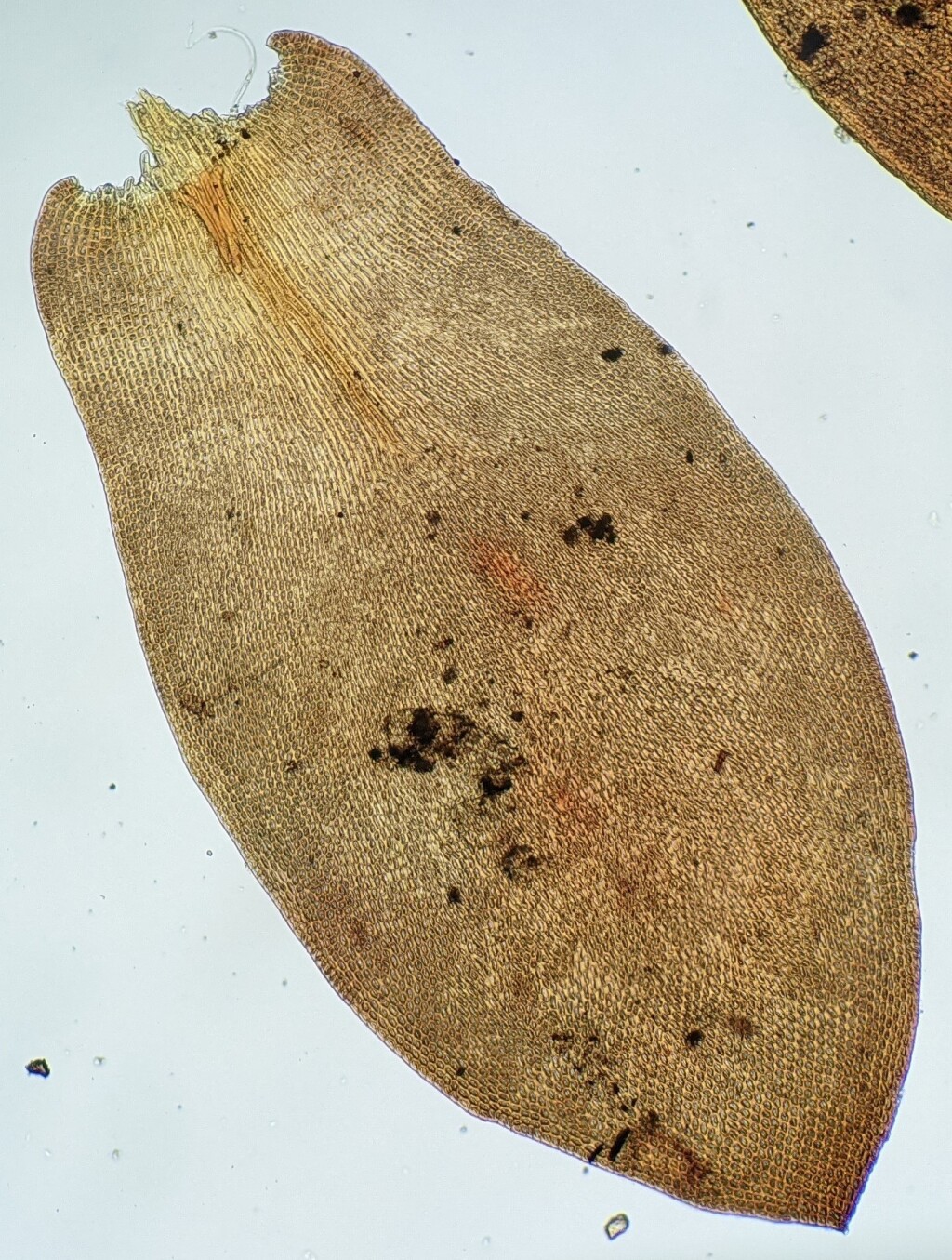Andreaea nitida
Hook.f. & WilsonDioicous. Loose tufts on rocks. Stems 15–20 (–30) mm long. Leaves erect-spreading when moist, appressed or erect-spreading when dry, rarely secund, oblong, obovate, orbicular or lingulate, 1–3 mm long, 0.7–2 mm wide; apices broadly acute or obtuse, sometimes mucronate; costae extending c. ½ leaf length, distinct, c. 1/6–1/5 width of leaf base; margins entire, usually partially broadly reflexed; cells in apical half quadrate, rectangular or rhombic, 6–12.5 μm long, 5–7.5 μm wide, smooth, unistratose; cells at base near margins isodiametric, rounded quadrate or hexagonal near costae, 5–12.5 μm long, 5–10 μm wide. Perigonial paraphyses present. Perichaetial leaves not convolute, sheathing. Pseudopodia 3–5 mm long. Capsules 1–1.3 mm long. Turgid spores 30–35 (–45) μm diameter; shrivelled spores 25–30 (–32) μm diameter.
HNF, VAlp. Recorded from rocky areas above 900 metres on the Bogong High Plains, Mount Buffalo and Mount Buller. Also NSW, ACT and Tas. New Zealand, New Guinea, southern Africa, western South America and Macquarie, Campbell, Auckland, Tristan da Cunha and South Georgia Islands.
 Spinning
SpinningMurray, B.M. (2006). Andreaeaceae. Flora of Australia 51: 108–123.

